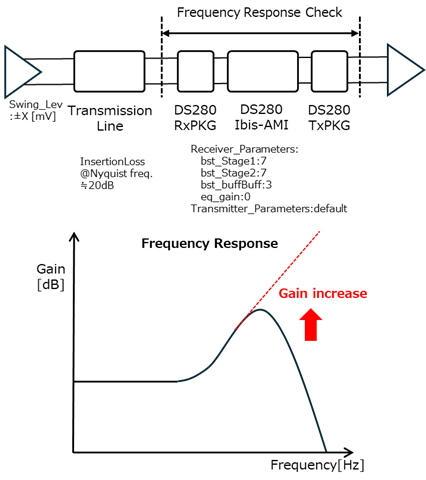Other Parts Discussed in Thread: DS280BR820
Tool/software:
I hope this email finds you well.
I am reading the following Guide.
DS280BR810, DS280BR820
Programmer's Guide
SNLU188B–October 2015–Revised September 2016
Could you please provide information regarding the characteristics of Table 25 under what conditions?
Conditions:
・What level will be input into the DS280?
・What are the characteristics of the transmission line preceding the DS280?
(For example, the Insertion Loss at the Nyquist frequency)
Best regards,


